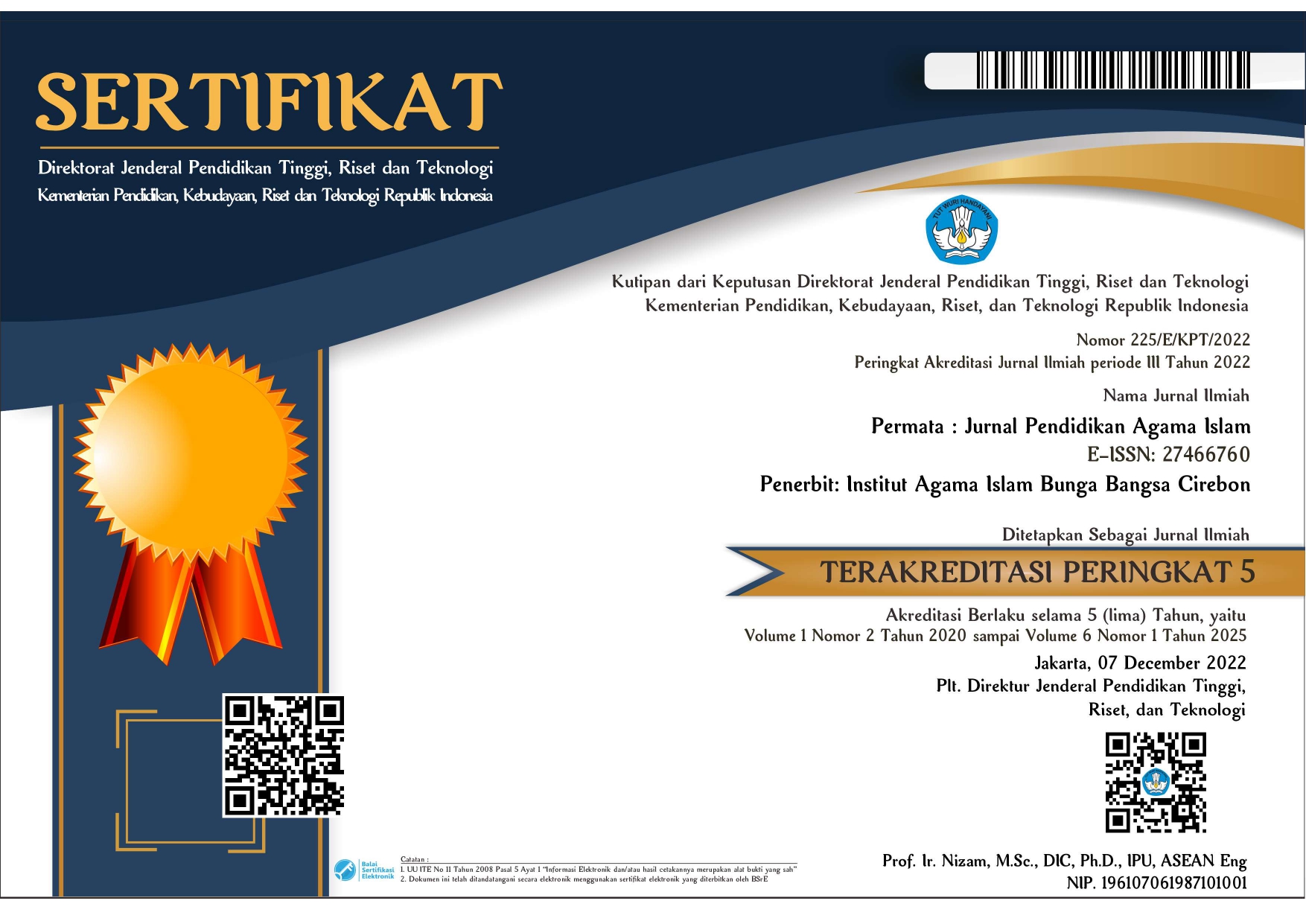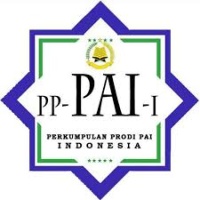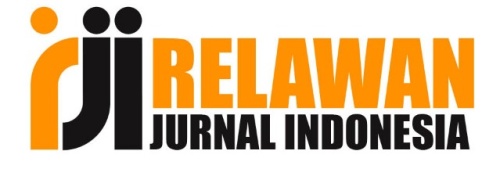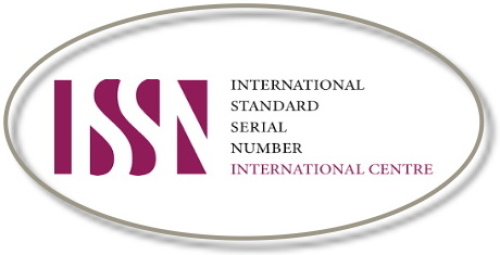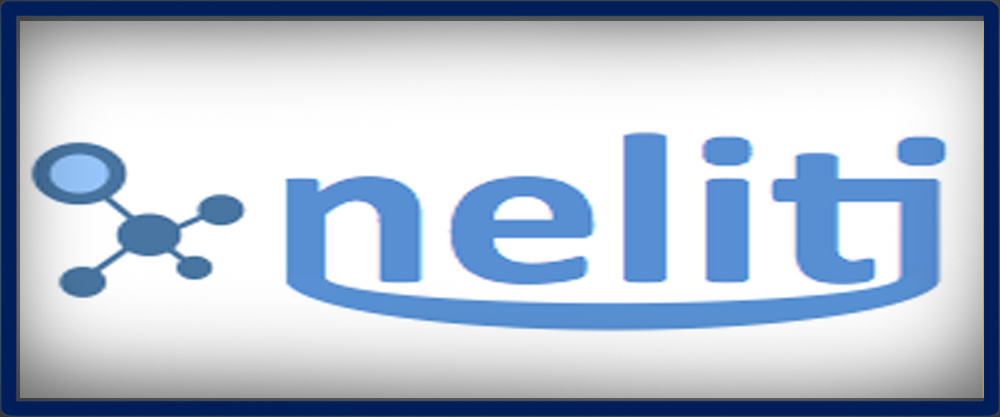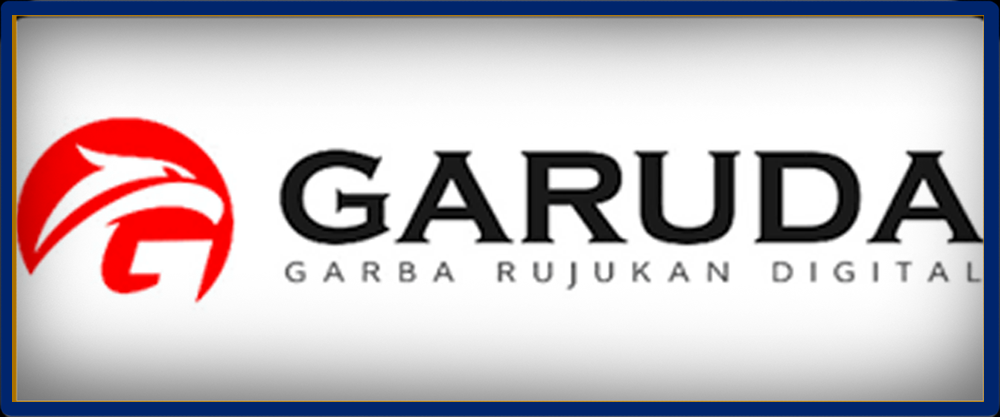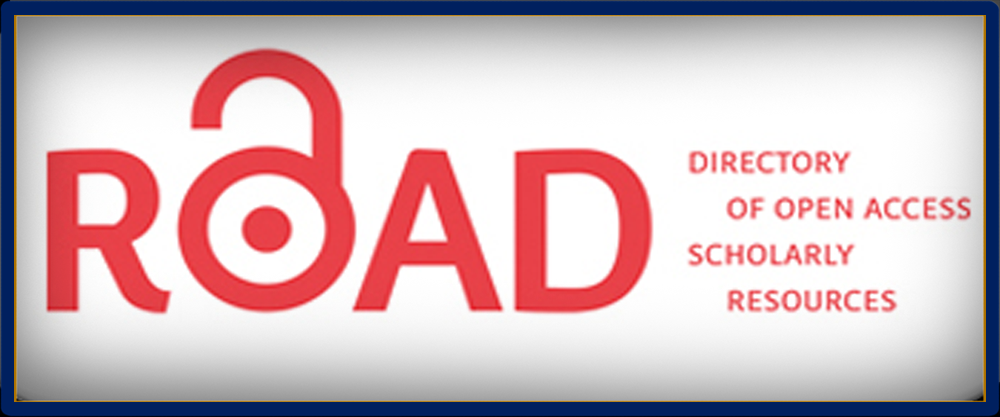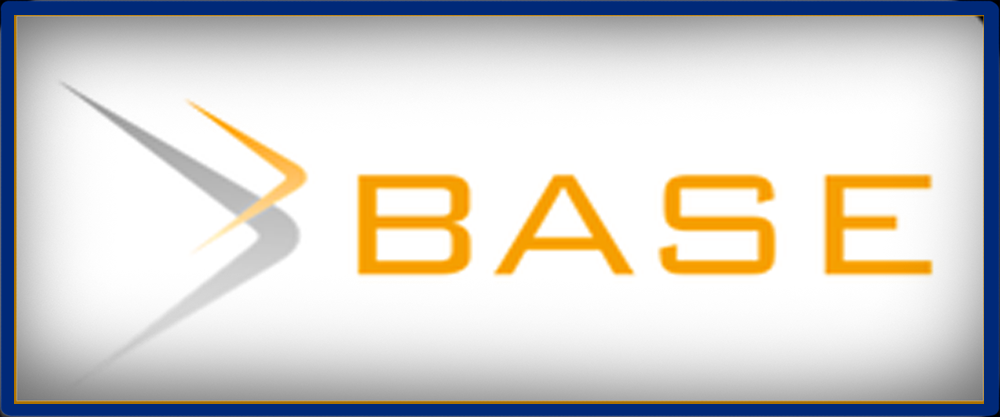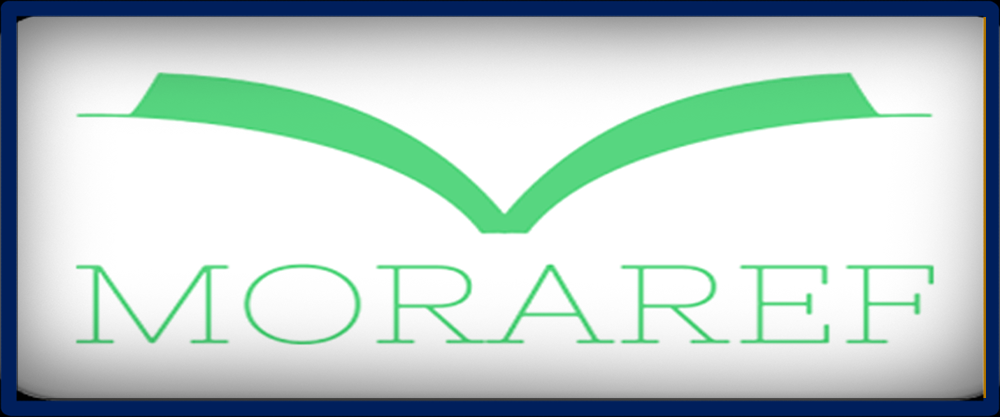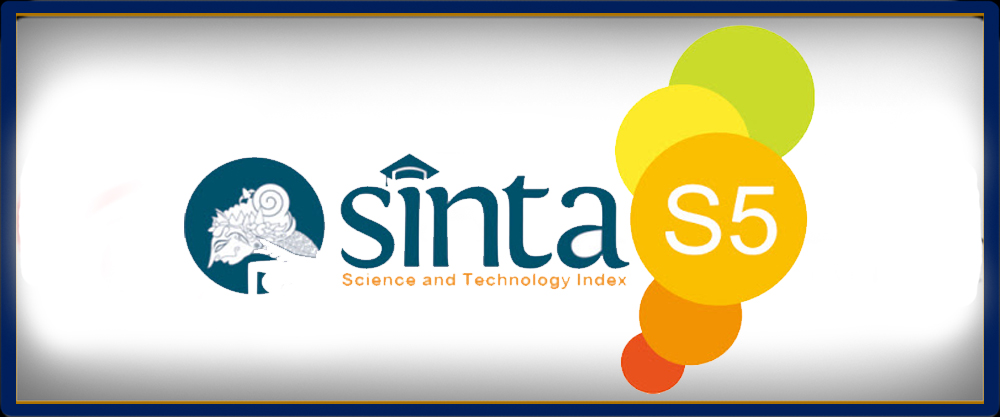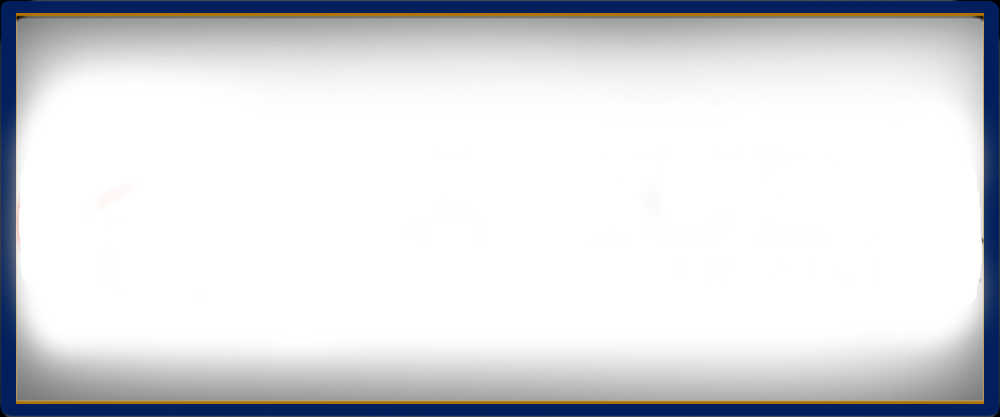| CERTIFICATE |
|
Author Guidelines
Permata : Jurnal Pendidikan Agama Islam (Islamic Education Journal) is published two times a year, peer-reviewed journal, and specializes in Islamic Education research and issue. The aim is to provide readers with a better understanding of Islamic education and present developments through the publication of articles and research reports.
The journal invites scholars and experts working in all disciplines of Islamic education. Articles should be original, research-based, unpublished, and not under review for possible publication in other journals. All submitted papers are subject to the review of the editors, editorial board, and blind reviewers. Submissions that violate our guidelines on formatting or length will be rejected without review.
General Guideline
- The article has not been published in other journals or other places.
- The article should be written in English (United States of America English) or Indonesian with a formal style and structure.
- The article should be written in a Word document (Microsoft Word), 1,15 space, 12pt Garamond, 5.500 to 8.000 words.
- The article is an original work of the author/s.
- The author/s have responsibility to check thoroughly the accuracy of citation, grammar, table, and figures before submission.
- The author/s have responsibility to revise their article after receiving a review from the editorial boards.
- The author/s should register at the e-journal of Permata : Jurnal Pendidikan Agama Islam (Islamic Education Journal) before submitting their paper and fill out the form completely.
- The article should be submitted online.
- The articles will be reviewed by Editorial Board.
- Articles are written with systematics as follows:
Format
The article file must be written in Microsoft Word format. We do not accept other formats, such as LaTex files or PDFs.
Article Length
The article's length ranges from 10-16 pages, including references. 5500 of 8000 words
Article Organization
The body of the article should be set (at least) using an IMRaD structure like the following:
- Abstract
- Introduction
- Method
- Result & Discussion
- Conclusion
- References
- Acknowledgement* [*optional]
ABSTRACT. The abstract contains the main objectives of the study, the methods used, research findings, and conclusions. Abstract written in English and Bahasa Indonesia to use it late font Garamond 10 pt, using single line spacing between lines. Left indent 2.5 cm and right indent 0 cm and abstract length between 150 to 250 words. Keywords need to be included to describe the realm of the problem under study and the main terms that underlie the implementation of the study. Keywords can be single words or compound words. The number of keywords is around 3-5 words. These keywords are needed for computerization. Searching for research titles and abstracts is made easy with these keywords.
INTRODUCTION. Content in the introduction, must contain: first, presentation of the main research or study topics; second, contains the latest literature related to citing the latest research literature (the last ten years) which has relevance to the article being studied; third, it can show gaps that have not been filled by previous studies, inconsistencies or controversies that arise between the existing literature; fourth, contain the problem, the purpose of the research or study, the context of the research or study, and the unit of analysis used in the study; and fifth, displaying what is discussed in the structure of the article.
METHODOLOGY. The method section describes the steps that were passed in executing the research or study. Therefore, it is necessary to show in detail to the reader why the method used is reliable and valid in presenting research findings. The research methods section should be able to explain the research methods used, including how the procedures are implemented, an explanation of the tools, materials, media or instruments used, an explanation of the research design, population and sample (research targets), data collection techniques, instrument development, and technique of data analysis. Writing subtitles in the method should be included in the paragraph instead of bullets, or numbering. For qualitative research such as classroom action research, case studies, etc., it is necessary to add the presence of researchers, research subjects, informants who helped along with ways to explore research data, location and duration of research as well as a description of checking the validity of research results.
RESULT. The main provisions in writing research or study findings are as follows: 1) present the research or study findings briefly, while still providing sufficient detail to support conclusions, 2) may use tables or pictures, but do not repeat the same information, by providing narration at the bottom of the table or picture so that the reader can understand the tables or pictures presented by the author, and 3) each research finding or study must be interpreted properly using standard spelling. Data analysis processes such as statistical calculations or hypothesis testing processes need not be presented, only the results of the analysis and the results of hypothesis testing need to be reported. Tables or graphs can be used by the author to describe the results of research or studies found verbally, by providing narration or comments at the bottom of the tables or graphs by referring to previous research results contained in reputable scientific journals both internationally and nationally.
DISCUSSION. The discussion section aims to: (1) answer the problem formulation and research or study questions; (2) shows how the findings were obtained or found; (3) interpret the findings; (4) linking research findings or studies with established knowledge structures; and (5) bring up new theories or modifications to existing theories, by comparing the results of previous studies that have been published in reputable journals. In answering the formulation of the problem or research questions, the results of the study must be concluded explicitly regarding previous research. Interpretation of research findings or studies can be done using empirical logic based on existing theories or previous research results in reputable journals both international and national, while findings in the form of reality in the field are integrated or linked to the results of previous studies or with existing theories. For this purpose, the author is required to refer to international journals (Scopus) and national journals (Sinta).
CONCLUSION. The conclusion consists of a summary of the article that presents a summary of the results of research that has been carried out and is the answer to the formulation of the problem. Conclusions must be aligned with the formulation of the problem and research objectives. If the conclusion is more than one, then it’s written using numbering numbers in paragraphs, not by using bullets, and the writer can also add the prospect of development of the results of the research or study as well as how to further implications will be the prospects of research or further research.
ACKNOWLEDGMENT. If needed, the author can add appreciation to this section.
References. Citations and References writing must use the Mendeley or Zotero application for citations American Psychological Association (APA) Full Note Edition 6th/7th, and uses the body note citation model: Author Name, Year, Title, Place of Publisher, and Publisher. The writing of bibliography follows the following format:
Example of a book
Arifin. (2011). Ilmu Pendidikan Islam Tinjauan Teoretis dan Praktis Berdasarkan Pendekatan Interdisipliner. Bumi Aksara.
Torlakson. (2014). ABlueprint for Science, Technology, Engineering, and Mathematics in California Public Education. California Departement of Education.
Example of a journal
Ramdzan, Z., Hamzah, I., & Zulkifli, H. (2022). 21st-Century Learning in Islamic Education. Journal of Pharmaceutical Negative Results, 13(07), 4221–4231. https://doi.org/10.47750/PNR.2022.13.S07.529
Roberts, A. (2012). A Justification for STEM Education. Technology and Engineering Teacher, 25(03), 6331–6345. https://doi.org/https://doi.org/10.1126/science.1201783
The manuscript should be prepared according to the following author guidelines and Template. The writing template can be downloaded here.

